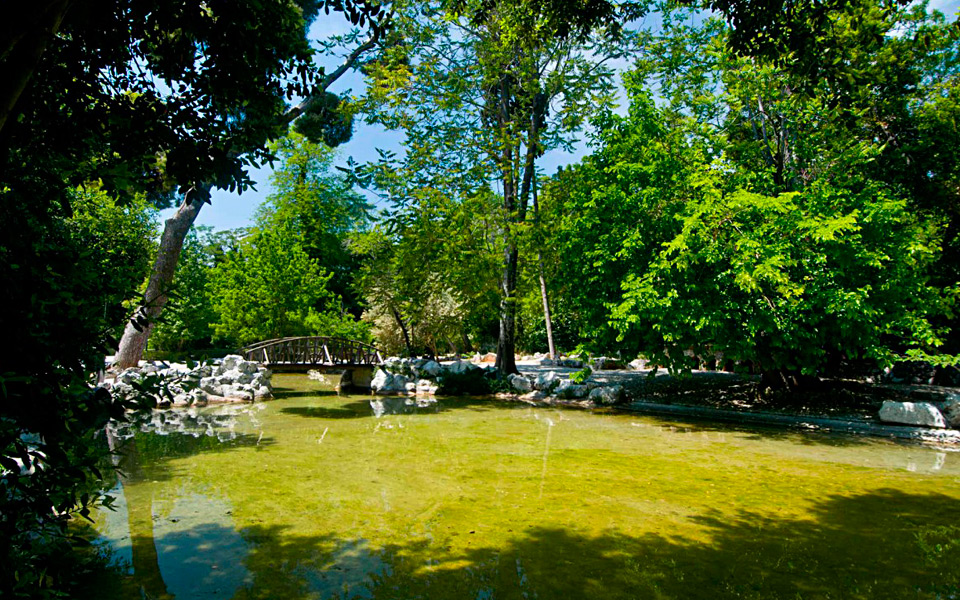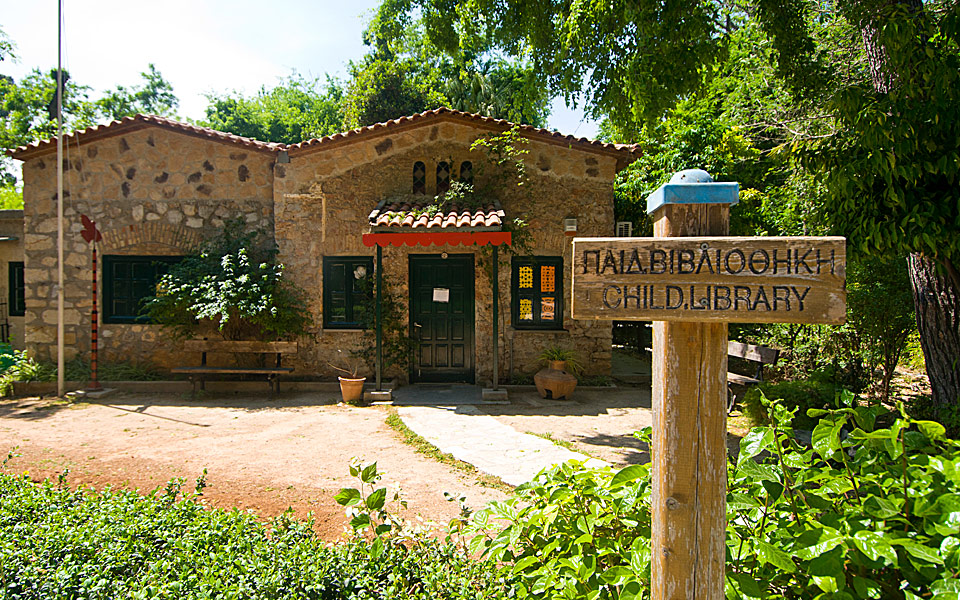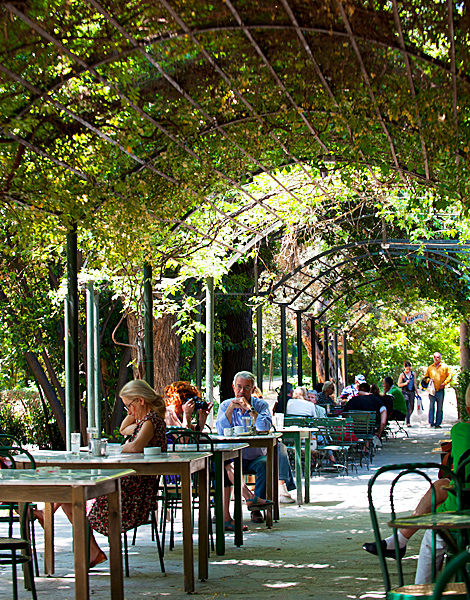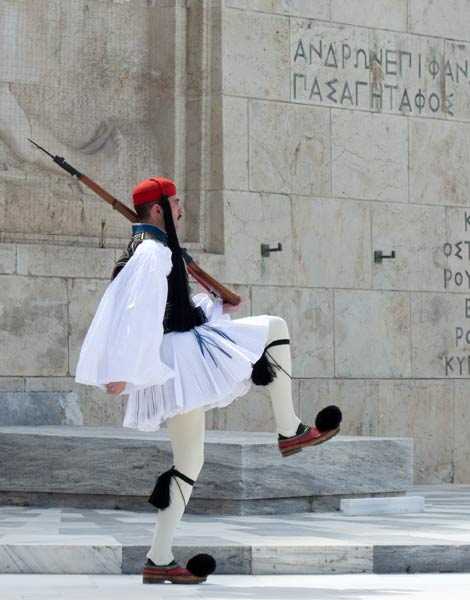Mt Parnitha: A Harmonious Blend of Nature and...
Only a short drive from Athens,...

One of the Garden's ponds, usually frequented by ducks
© Clairy Moustafellou
The National Gardens, formerly known as the Royal Gardens, was an expansive, 15.8 hectare horticultural project commissioned in 1838 by Amalia, the first queen of modern Greece. A year after the commission was made, construction of the palace and royal quarters began, with work also commencing to place the 15,000-odd plants we see today. There are currently 520 species and varieties – from large trees and perennials to shrubs and climbers – of which 100 are native to Greece. The rest come from different parts of the world, making for a fascinating exploration, since many of the trees and shrubs are identified by small signposts.
Our walk begins at the main entrance on Amalias Avenue, to the right of Greece’s Parliament building in Syntagma Square. Open every day from sunrise to sunset, the vast garden has six entrances: one on Vassilissis Sofias Avenue, three on Irodou Attikou Street (though one is always locked) and two from the imposing Zappeion Hall adjacent to the park. Entering from Amalias Ave, on your right you will see a large map showing the location of the park’s key monuments and highlights. Take a good look as it will help you keep your bearings. Ahead of you, in the middle of a pretty arrangement of flowerbeds, there is a sundial telling the time the old-fashioned way.
Further in the distance you will note the arbor, lined with Washingtonia palms, many of which were planted by Queen Amalia herself. On your right, there’s a tap with fresh water, where you can refill your bottle for the walk ahead. Athenians like coming to this part of the park for its large grassy expanse, which is ideal for picnics or an open-air workout. As you make your way deeper into the garden, dozens of small paths branch out this way and that, with signposts at intersections indicating where you’re headed to. Despite the tangle, you can’t get completely lost because all the paths eventually lead to a clearing.
“ Entering from Amalias Ave, on your right you will see a large map showing the location of the park’s key monuments and highlights. ”

A Sundial
© Clairy Moustafellou

Children's Library
© Clairy Moustafellou
“ If you’re visiting with children and want to head straight for the playground, it is best reached from the entrance just behind the Zappeion Hall, also nearby you will also find a petting zoo, where kids can feed the wild goats, geese, ducks, and rabbits. ”
PONDS AND BUSTS
Along the 7,500-meter network of paths and delightful shaded lanes, you will come across ponds that are used for irrigation. Six busts of famous personalities have also stand at different points here. These include those of Ioannis Kapodistrias, independent Greece’s first head of state, the poet Dionysios Solomos, who wrote the verses used in the Greek national anthem, and the composer who set them to music, Spyros Samaras. You will also come across scattered ancient ruins, the most impressive of which are the remains of a Roman-era bath near the fairytale-like children’s library, and part of a mosaic floor belonging to a Roman-era villa, near the Vassilissis Sofias St. entrance. A towering cypress tree beside the mosaic is around 170 years old.
A large chunk of marble near the playground is known as Amalia’s Rock, because this is where she had her chair placed so she could supervise the work being done on her garden.
If you’re visiting with children and want to head straight for the playground, it is best reached from the entrance just behind the Zappeion Hall. Nearby you will also find a petting zoo, where kids can feed the wild goats, geese, ducks, and rabbits, as well as admiring the peacocks and, just a little further away, the exotic birds.

Coffee and snacks under the shade, a perfect end to your walk in the Garden.
© Clairy Moustafellou

A soldier of the presidential guard ("evzon")
© Shutterstock
POMP AND CEREMONY
Try to time your departure from the garden with the changing of the presidential guard, which takes place every hour, on the hour. Most visitors watch this emblematic ritual in front of Parliament – where it is admittedly spectacular – but there is something particularly tranquil and beautiful about watching it in front of the Presidential Mansion on Irodou Attikou Street, sitting on the outer wall of the National Garden, under the shade of an old tree. The street, like the stunning open-air amphitheater under the Acropolis and other monuments, is named after Herodes Atticus, a wealthy Greek aristocrat who served as a Roman senator in the mid-second century.
Only a short drive from Athens,...
One of the most impressive canyons...
What do kiwis have to do...
Discover the best of Mount Olympus...